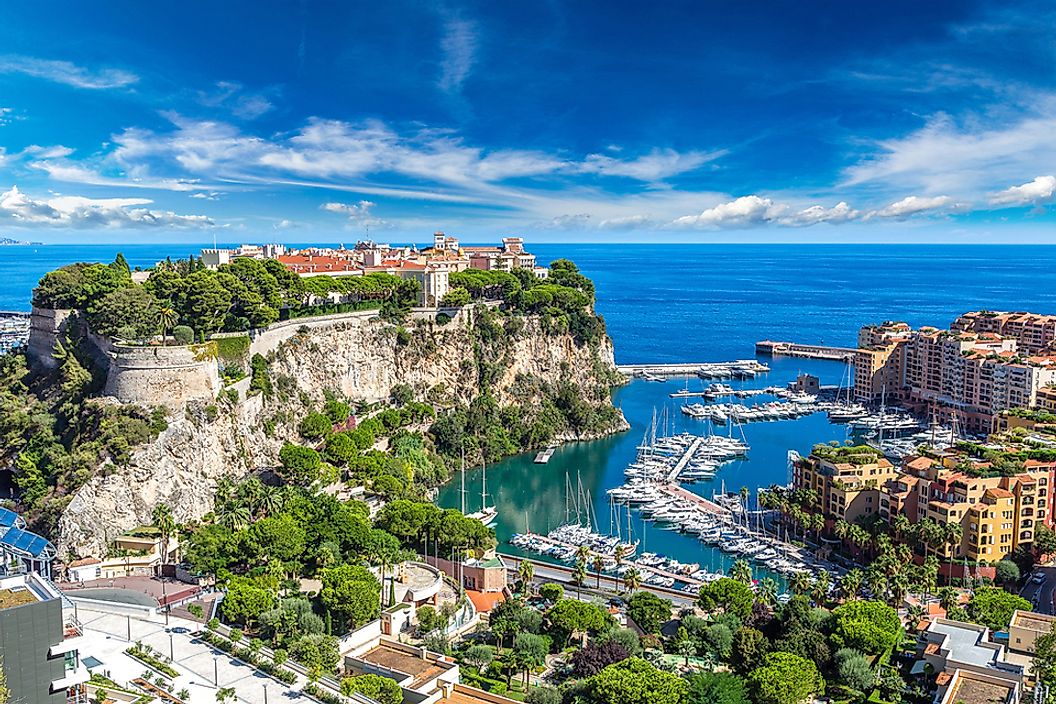How Did Monaco Get Its Name?

Known officially as the Principality of Monaco, Monaco is the second smallest sovereign state in the world. The country has a population of 38,400 people (2016 census) and covers a region of 2.02 square km. Accordingly, Monaco is also the most densely populated state in the world, with an average of 19,009 people per square km. Located in the French Riviera, the country is surrounded by France on three sides, while the Mediterranean Sea borders the other side.
Discovered by Phocaeans of Massalia, Monaco is a haven for tourists and the wealthy due to its excellent climatic conditions. The country's official language is French, but other languages like Italian, English, Occitan, and Monegasque are also spoken. Roman Catholicism is the most popular religion practiced in Monaco. The nation is ruled by a constitutional monarchy and a unitary parliament. Despite being independent, the nation's security is maintained by France, although Monaco does have two small military groups.
How Monaco Got Its Name?
Back in the 6th century BC, Monaco was a colony of Phocaean Greeks, and the Ligurians (the first inhabitants of Monaco) referred to it as Monoikos, which means “single house.” This meaning underlines the importance of independence and self-reliance and determination. Monoikos is derived from the Greek word "μόνοικος" which is a combination of the words "μόνος" (monos) which means "alone" or "single" and “οἶκος” (oikos) which means "house."
Monaco After the Year 476
According to a legend in Monaco, Hercules once passed through the area, which explains how the most significant port in Monaco became named Port Hercule. Monaco later fell into the hands of the Holy Roman Empire after the Phocaeans failed to keep control. However, after the Roman Empire fell in 476, the area experienced numerous attacks and invasions from outsiders until the year 975, when the Count of Provence was able to expel the Saracens.
In 1162, the authority of Genoese Ghibellines (from Genoa) in the area was recognized by Emperor Frederick Barberousse, and in 1191, Emperor Henri IV handed the area to over them officially. However, the Ghibellines family, which supported the Germanic Roman Empire, faced opposition from the Guelph family which helped the Pope and this led to a civil war in 1270. The Ghibellines were ultimately victorious, forcing the opposing family and its supporters, including the Grimaldi family, into exile.
In response to the defeat of the Guelph family, Francois Grimaldi “Il Malizia,” which is Italian for either “The Cunning” or “The Malicious” led his fellow men together with his cousin, Rainier I, in 1297 and took the Rock of Monaco by surprise from the ruling family. Since this year (1297) onwards, the Grimaldi family has ruled over Monaco. Francois Grimaldi became the first leader, and was eventually succeeded by Rainier I upon his death.
The Genoese family tried to capture Monaco, but their attempts were crushed when Louis XII recognized the independence of Monaco and sealed the deal by creating a partnership by marrying off the Princess of Monaco to the French king.











